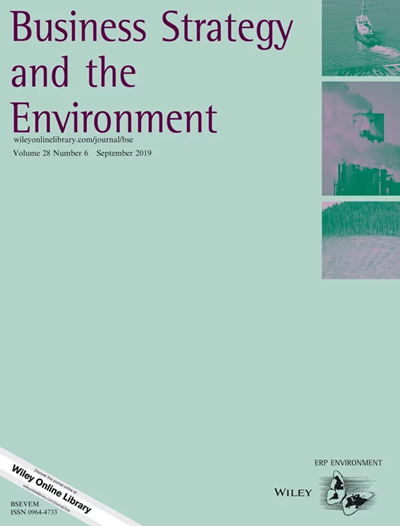Developing Green Hydrogen‐Based Regenerative Supply Chain Strategies for a Sustainable Future: An Empirical Study
IF 12.5
1区 管理学
Q1 BUSINESS
引用次数: 0
Abstract
Climate change poses a significant challenge for governments and businesses around the world. Amidst the increasing calls for decarbonization of the economy to combat climate change, policymakers and decision‐makers are carefully considering the advantages and disadvantages of green hydrogen. To enable a successful green hydrogen economy, all participants must emphasize the green hydrogen regenerative supply chain and prioritize the reconfiguration of tacit, rare, and socially complex resources. This concerted effort is essential for building green hydrogen regenerative supply chain capabilities. However, it is worth noting that the existing literature falls short in providing empirical evidence regarding the direct impact of such resources on organizational capabilities and the methods by which dynamic capabilities are cultivated to thrive in the rapidly changing business environment. Hence, the study firstly aims to identify and examine the effect of tactic resources, rare resources, and socially complex resources that help to build organization capabilities or zero‐level capabilities (i.e., pollution prevention capabilities and product stewardship capabilities). Second, the study investigates how the firm recombines or reconfigures its organization capabilities or zero‐level capabilities (i.e., pollution prevention capabilities and product stewardship capabilities) into first‐order capabilities or dynamic capabilities (i.e., green hydrogen regenerative supply chain capabilities) that better fit its environment. Thirdly, the study aims to understand how dynamic capabilities (i.e., green hydrogen regenerative supply chain capabilities) help to achieve enhanced operational performance. The data has been analyzed using empirical methods, and the findings provide interesting insights for research scholars, practitioners and policy makers.面向可持续发展的绿色氢基可再生供应链战略:一项实证研究
气候变化对世界各国政府和企业构成了重大挑战。随着越来越多的人呼吁经济脱碳以应对气候变化,政策制定者和决策者正在仔细考虑绿色氢的利弊。为了实现成功的绿色氢经济,所有参与者必须强调绿色氢再生供应链,并优先考虑隐性、稀有和社会复杂资源的重新配置。这种协同努力对于建立绿色氢再生供应链能力至关重要。然而,值得注意的是,现有文献缺乏关于这些资源对组织能力的直接影响以及培养动态能力以在快速变化的商业环境中茁壮成长的方法的经验证据。因此,本研究首先旨在识别和检验有助于构建组织能力或零级能力(即污染预防能力和产品管理能力)的策略资源、稀有资源和社会复杂资源的作用。其次,该研究调查了企业如何将其组织能力或零级能力(即污染预防能力和产品管理能力)重组或重新配置为更适合其环境的一级能力或动态能力(即绿色可再生氢供应链能力)。第三,本研究旨在了解动态能力(即绿色可再生氢供应链能力)如何帮助实现增强的运营绩效。本文采用实证方法对数据进行了分析,研究结果为研究学者、从业者和政策制定者提供了有趣的见解。
本文章由计算机程序翻译,如有差异,请以英文原文为准。
求助全文
约1分钟内获得全文
求助全文
来源期刊

Business Strategy and The Environment
Multiple-
CiteScore
22.50
自引率
19.40%
发文量
336
期刊介绍:
Business Strategy and the Environment (BSE) is a leading academic journal focused on business strategies for improving the natural environment. It publishes peer-reviewed research on various topics such as systems and standards, environmental performance, disclosure, eco-innovation, corporate environmental management tools, organizations and management, supply chains, circular economy, governance, green finance, industry sectors, and responses to climate change and other contemporary environmental issues. The journal aims to provide original contributions that enhance the understanding of sustainability in business. Its target audience includes academics, practitioners, business managers, and consultants. However, BSE does not accept papers on corporate social responsibility (CSR), as this topic is covered by its sibling journal Corporate Social Responsibility and Environmental Management. The journal is indexed in several databases and collections such as ABI/INFORM Collection, Agricultural & Environmental Science Database, BIOBASE, Emerald Management Reviews, GeoArchive, Environment Index, GEOBASE, INSPEC, Technology Collection, and Web of Science.
 求助内容:
求助内容: 应助结果提醒方式:
应助结果提醒方式:


